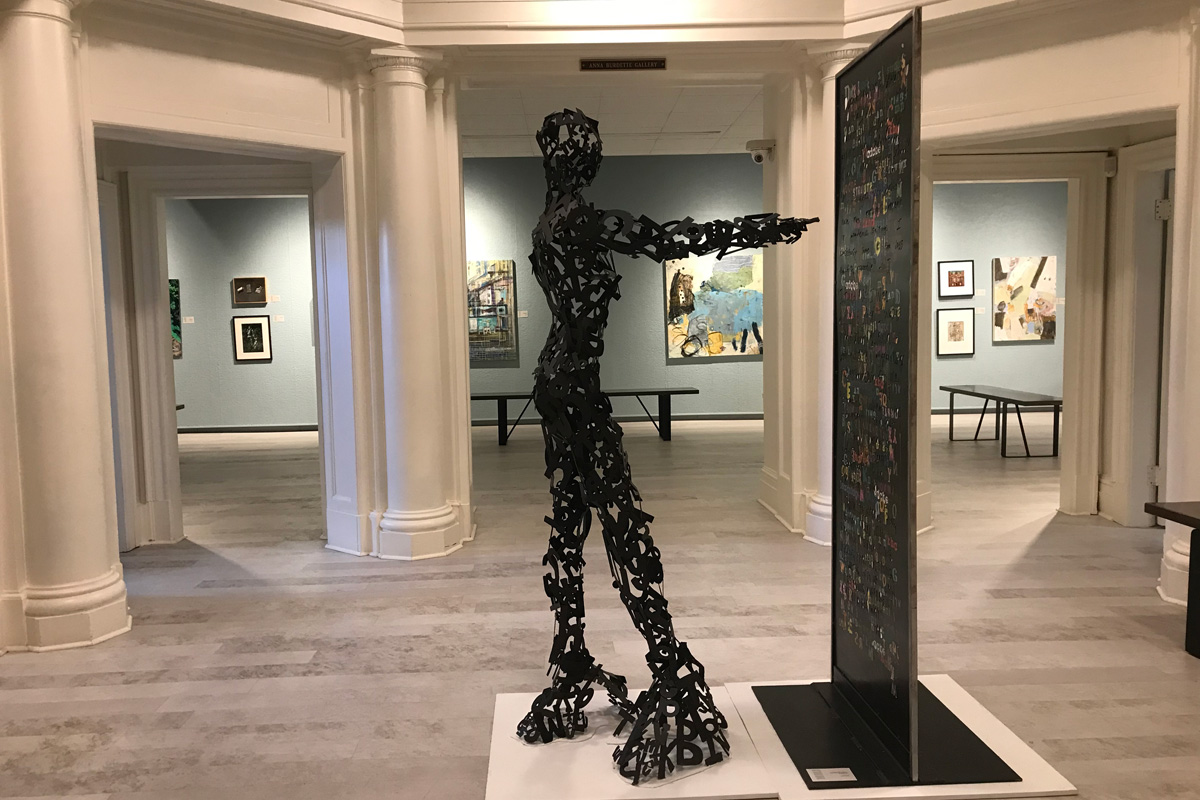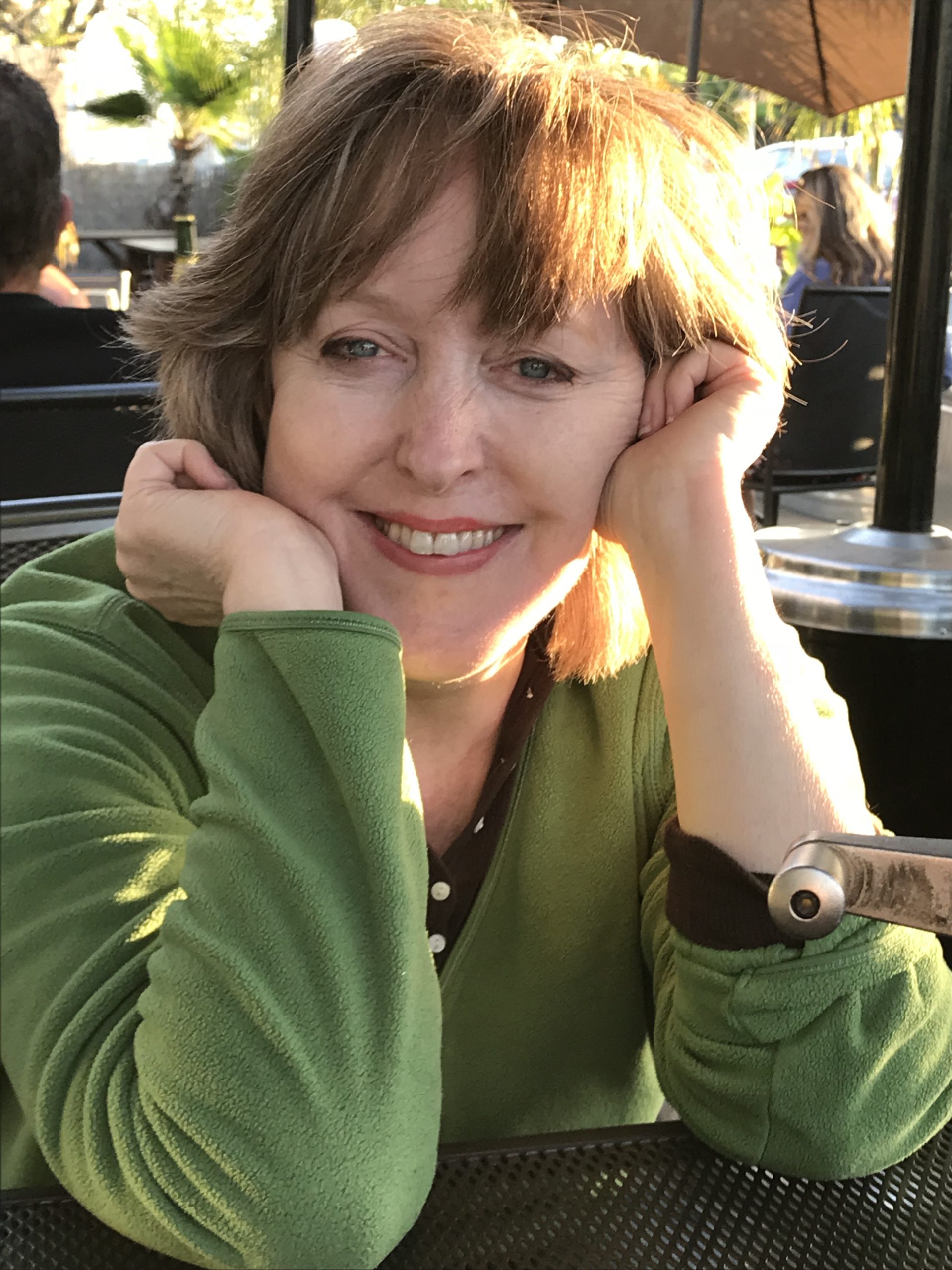A clear sense of artistic zeal and boundary-pushing creativity fill the Meridian Museum of Art’s galleries and rotunda in the 47th annual Bi-State Art Competition and Exhibition, an always eclectic showcase of contemporary regional works from artists who are current or past Mississippi or Alabama residents.
Its 84 original works from 59 artists cover a wide swath of media and styles, and a big range of perspectives, from artists who are well-established as well as those who are on the front end of promising careers.
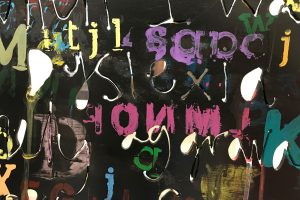
Commanding the rotunda is Cecelia Moseley’s “Acknowledge,” a taller-than-life steel figure and panel that reveal fascinating details the closer one looks, whether in the welded, black, alphabet jumble that comprises the feminine form, or the painted letters and plasma-cut words on the panel.
“Most of my work stems from my struggle with dyslexia,” Moseley says. The Meridian native and University of Mississippi graduate is now pursuing her master’s in fine art and sculpture at Louisiana State University. Here, she illuminates the disorder and its frustrations for viewers, as they try to read and understand what Moseley describes as “almost the chaos going on.”
“Acknowledge” makes an arresting intro to the show. Kate Cherry, museum executive director, acknowledges as much. “I always try to do the ‘Winged Victory’ at the Louvre,” she says, smiling at the reference to the famous sculpture and its dramatic setting at the Paris museum.
The show’s snapshot of current, contemporary art from mostly professional artists reveals a regional landscape fertile in ideas, emotion, wit, beauty and design. “They are pushing whatever medium they’re working, usually to the edge,” Terry Cherry, chair of the museum’s exhibition committee, its art consultant, retired community college art professor and Kate’s husband, says. “Art’s always trying to search for something new.”
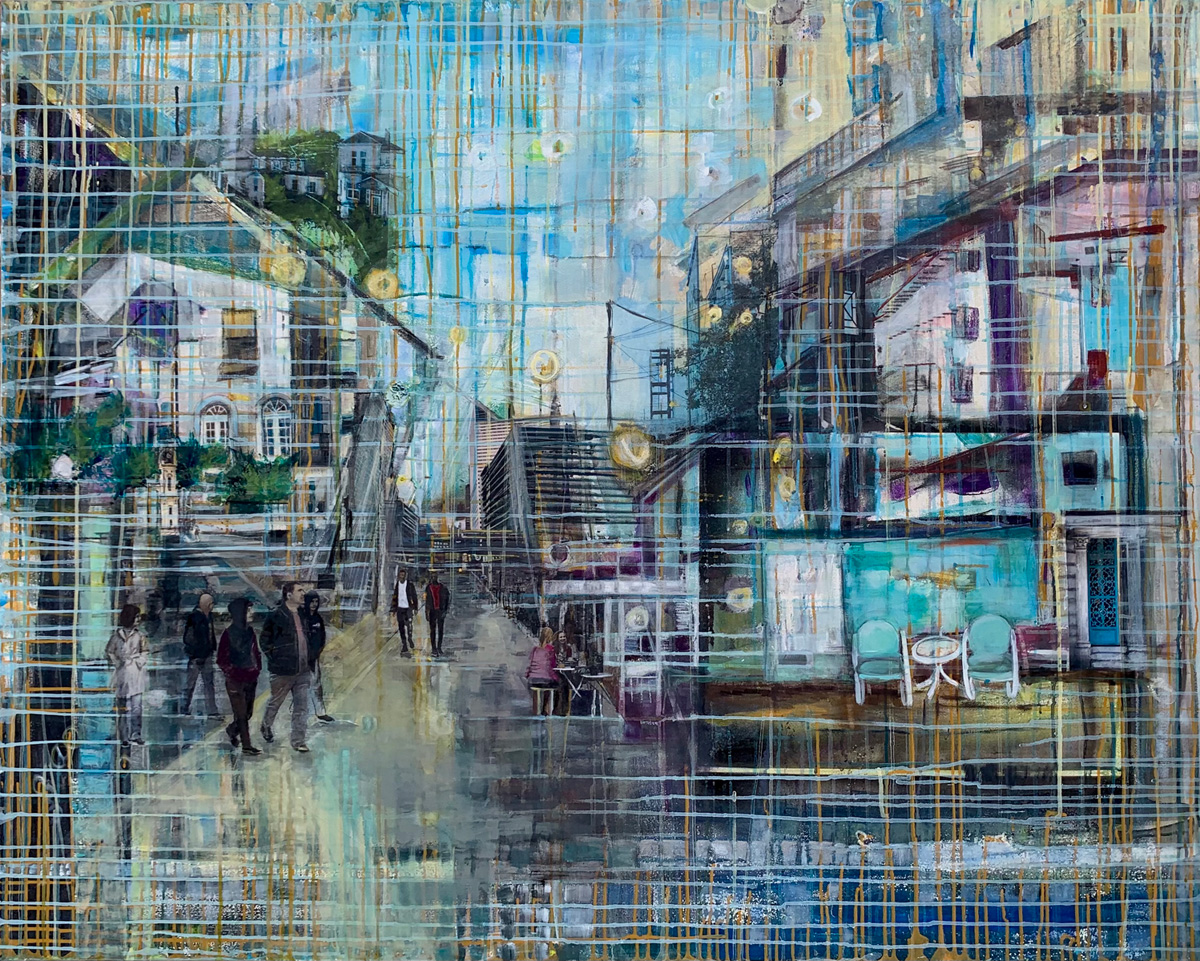
Some works seem prescient, even. “Empty Chairs” by Andrea Kostyal of Hattiesburg is an absorbing mixed-media work of a city scene with people on sidewalks and a pair of vintage motel chairs poised to catch a moment’s leisure. Viewed just days after Hurricane Ida’s strike, the artwork and its grid patterning can’t help but bring more to mind—climate change, the electric grid, and New Orleans’ and Lousiana’s troubles, all wrapped in a weave of foreboding or just a threadbare matrix.
A trio of paintings from Charles Carraway of Terry straddle a serene and eerie divie. Lovely pastels soothe, but tall, blank walls and hidden corners unsettle.
Obie Clark crafts a fiery red clay vessel that anchors one gallery corner, striking an animated pose on wood legs. It’s personality in a jar, communing nicely with a large Jere Allen oil painting, “Guide,” where a mysterious and luminous face emerges like a spirit from inky depths. In bookend fashion, Allen’s painting “Filo,” depicting a dog, shares a similar otherworldly feel, from the glossy blackness of the background to the touches of red so intense they seem to spark.
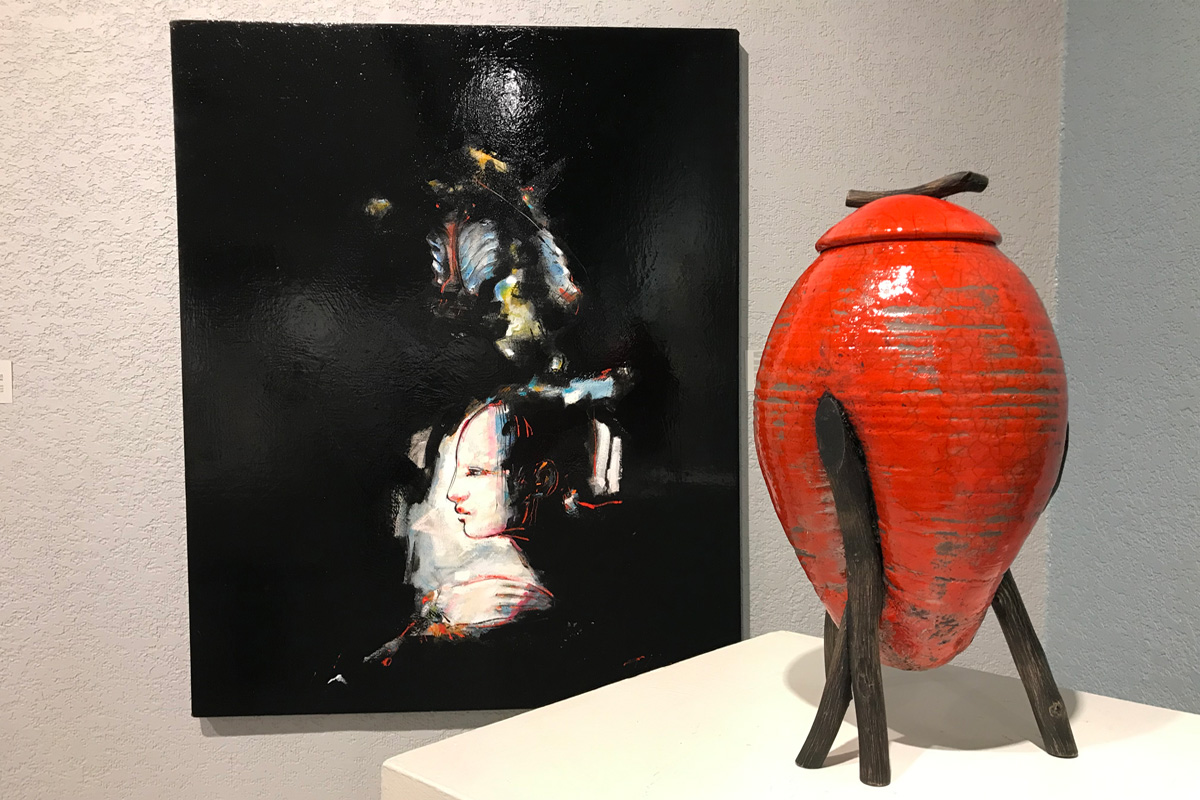
“Filo” comes with a story. He’s a dog the Oxford artist and his wife, Joe Ann, met on a trip with friends, Ron and Chris Dale, to Cabuya, a Costa Rican fishing village. “I like to call it the end of the earth,” Joe Ann says of the remote retreat.
Their landlady’s dog, Filo, would follow her and Chris on daily walks along the gravel road. “I guess he’d wait for us, and the minute we stepped into the road, Filo would walk behind us.” As they continued, other neighbors’ dogs would come out and fall in behind Filo “like soldiers,” she says, and on the way back, peel off back to their homes. He was less like a pet than a guardian. “I loved the way Jere painted the painting because that’s the way Filo always appeared—he just stepped out of the shadows, and there he was.”
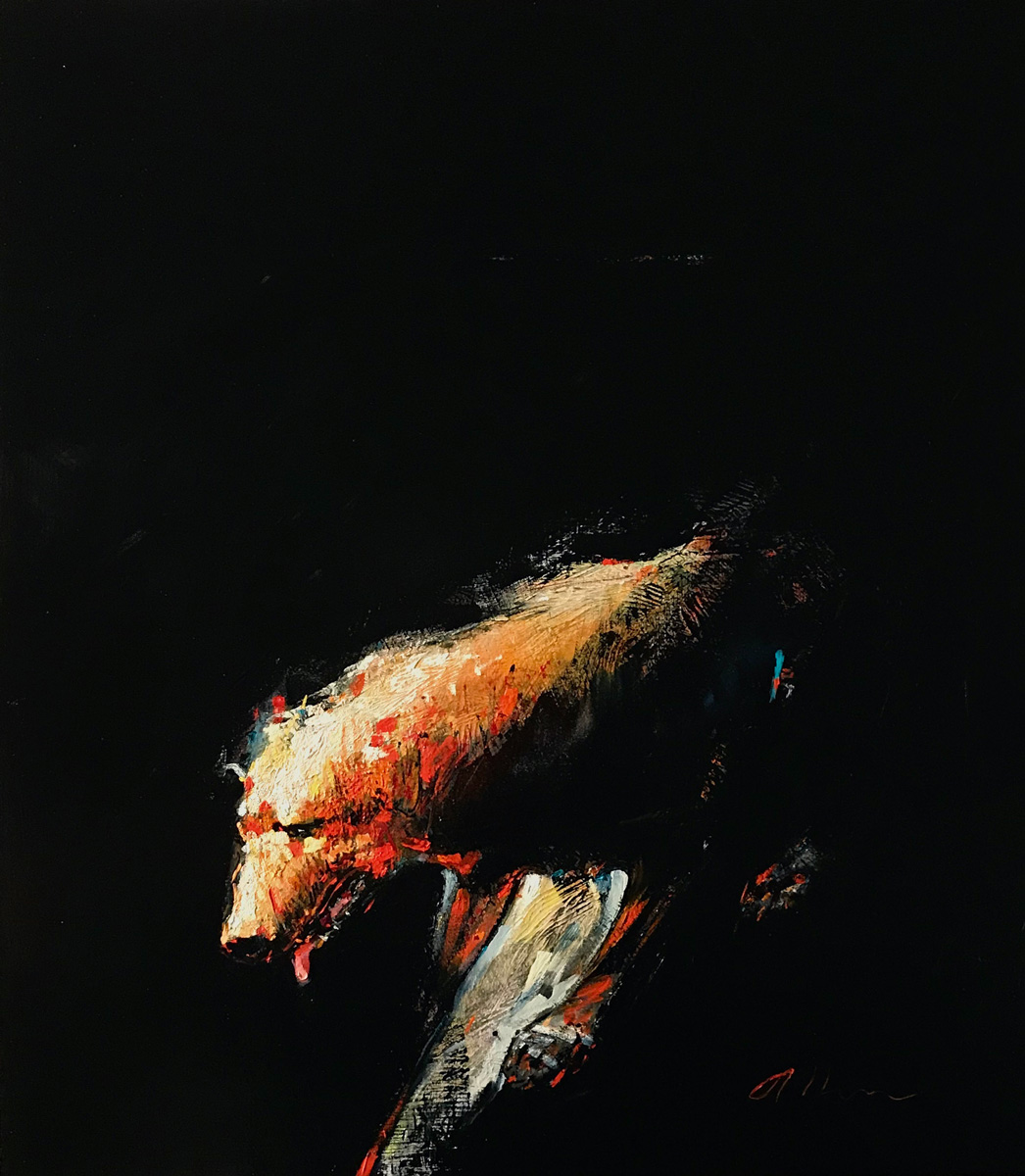
In between Allen’s works, Gary Chapman’s mixed-media “WO MAN,” is another eye magnet, measuring 7-by-5 feet and depicting most of a muscular female nude, a mirror replacing her head and a broken strand of jewelry dangling from one hand. Rays, as from the stylized sun, serve her heroic stance. The row of shadowboxed, completely black doll heads along the bottom, and a rising arc of objects and images—facets of being female, it seems—add to the intrigue of this work by the University of Alabama at Birmingham art professor.
“His work is phenomenal. It’s always very impactful,” Kate Cherry says.
“That’s what art’s supposed to do. It’s not supposed to give you every answer,” Terry Cherry says. “It’s supposed to make you come up with your own answers.”
Explorations in a range of media contribute to the show’s delight, including wet collodion ambrotype (Euphus Ruth of Greenville), encaustic wax (Laura Holladay of Meridian), digitalized contact lumen (Marita Gootee of Starkville) and fiber (Julia Graber of Brooksville). Black plastic bags even get into the act, hooked like a rug and turned into art in Sabyna Sterrett’s haunting “Plastic Forever, Dark Dilemma.”
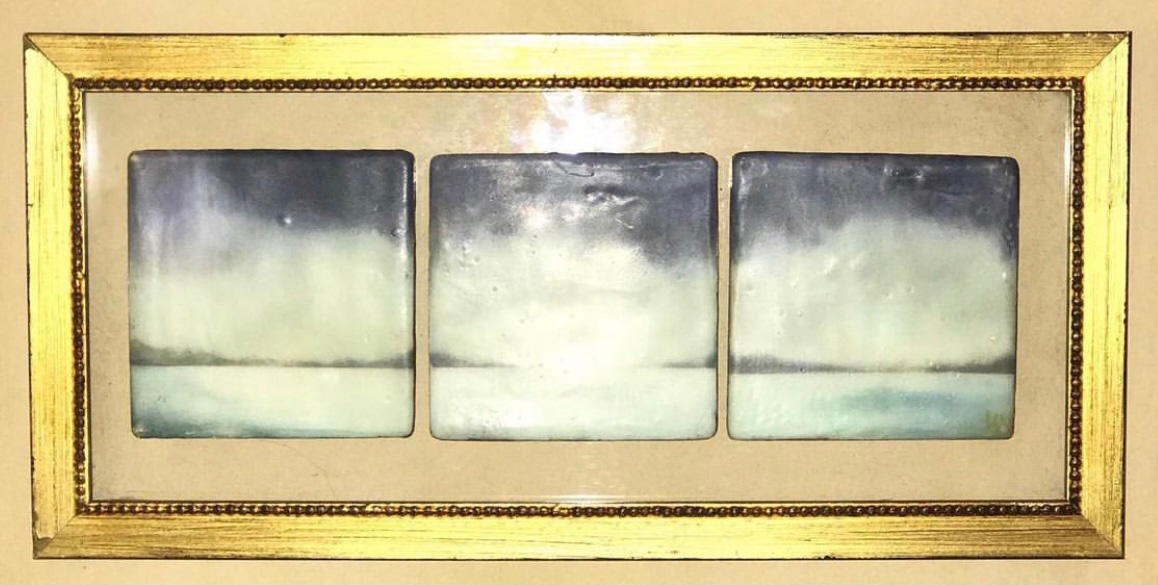
Abstract paintings by Maureen Donnelly of Jackson are like a refreshing breath of sweet air in the next gallery, alive with bright hues and cool textures. “The bright colors I’m drawn to reflect solace and optimism,” Donnelly says of works such as “Atchafalaya” and “Xanthus,” the two in this show. “Atchafalaya” is a personal favorite of hers. “The paintings, for me, work best when they come out spontaneously like that.”
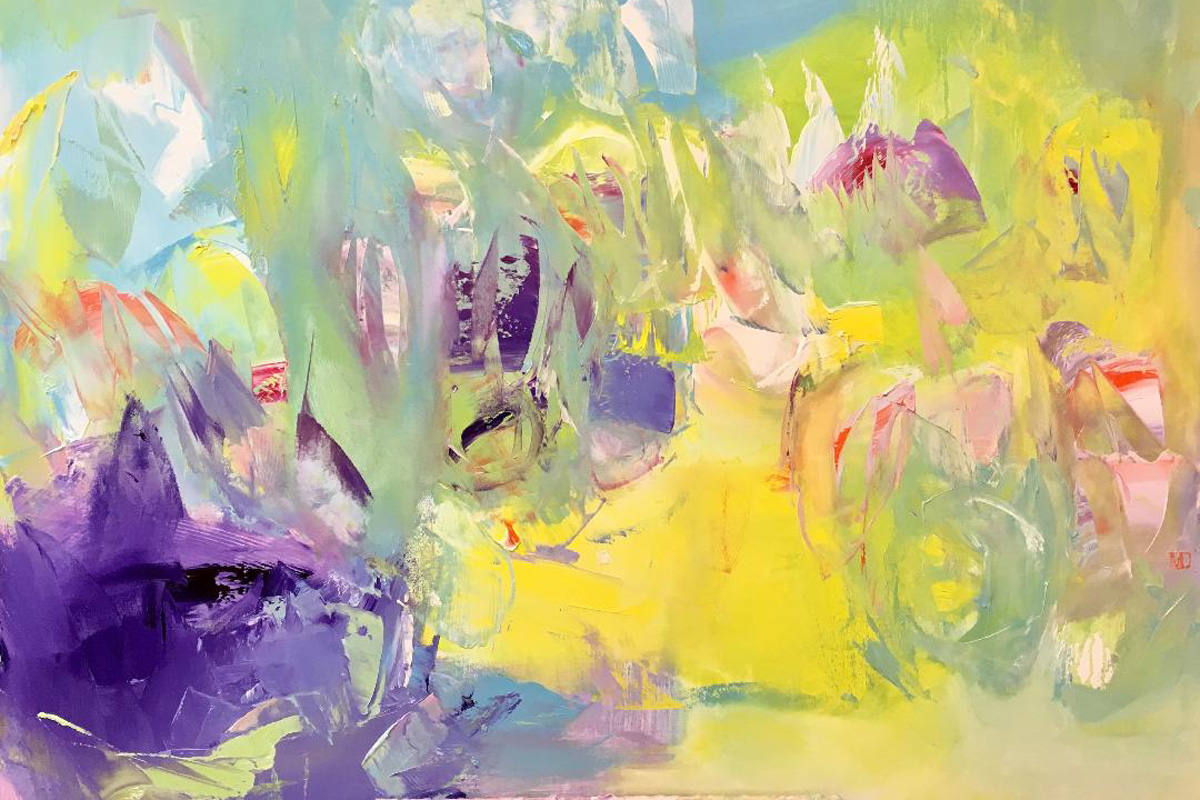
“She has her own technique,” Dan Piersol, retired curator, artist and Donnelly’s husband, says regarding the physicality of her process, which can involve thin and thick washes, paint everywhere, application with a paper towel or manipulation with a cake server. “It’s so gutsy, and she just lets it fly and sees where it lands, and it lands beautifully so often.”
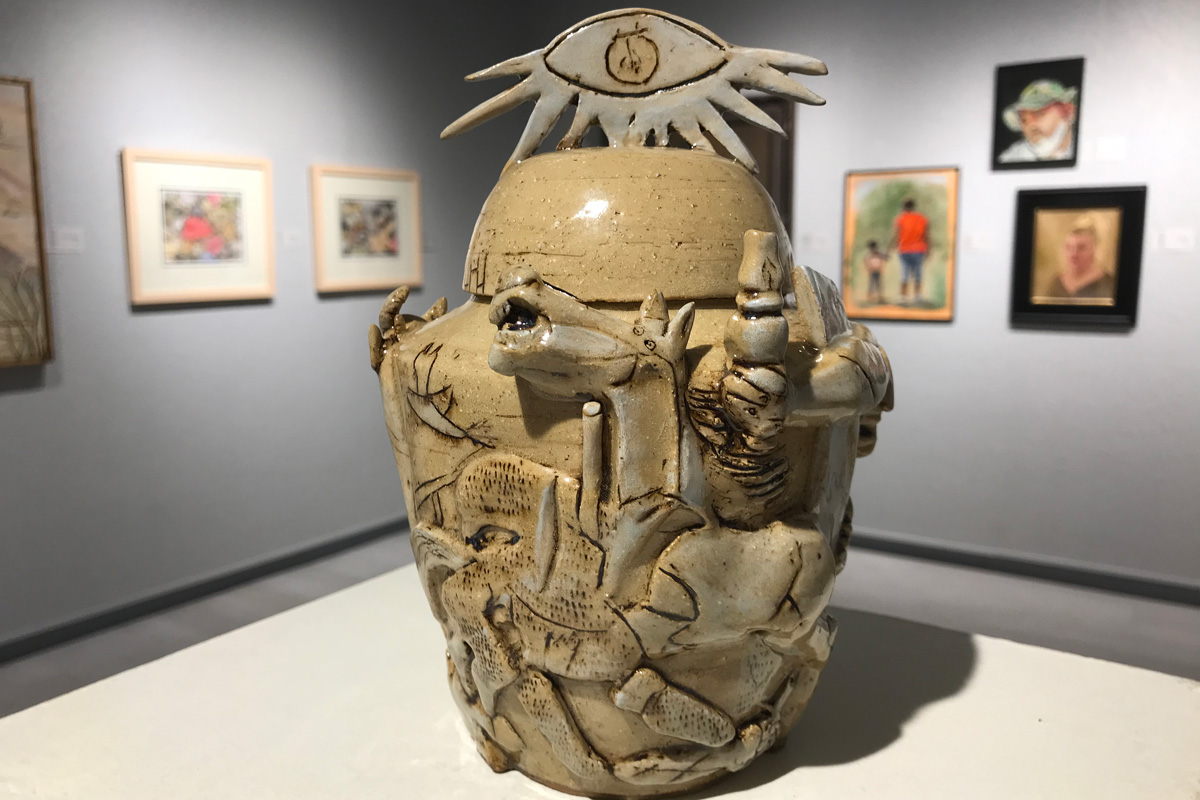
A third gallery highlights landscapes and portraits. Spotlighted in the center is Hunter Vroonland’s “Guernica Jar,” a clay homage to Picasso that wraps his famous work around the vessel and pushes its details into 3D.
Gail Morton’s “The Compass” stands out, too, compelling in the near magical firefly-like glow in the background, the way the young woman suits the setting with wood sprite-ish ease, and the look of frank contemplation on her face.
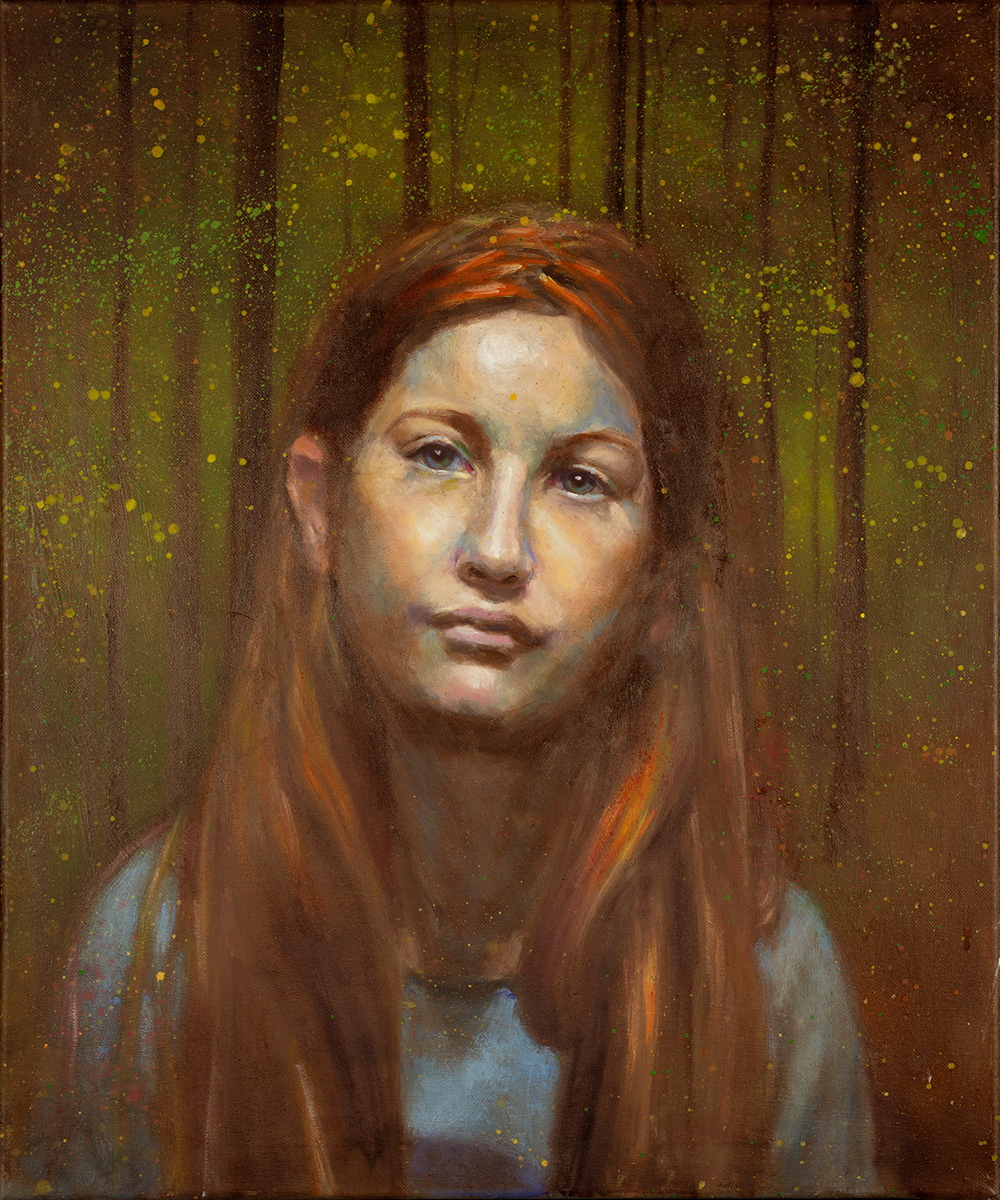
The Bi-State has been an annual staple for the Meridian Museum of Art since 1974, instituted soon after the museum’s 1970 debut as a way to broaden its focus beyond the city, to a more regional outlook. A professional juror selects the works. This year, Kevin Haynie, the lead installation manager at Crystal Bridges Museum of American Art’s satellite contemporary art space, Momentary, in Bentonville, Ark., culled through 261 entries to form this collection.
“It can be difficult to parse one work above another,” Haynie writes in a juror’s statement, “but the power of direction can be felt even in the absence of an artist’s statement or biography,” as was the case with the Bi-State show’s “incredibly competitive” group of submissions. “There were many artists who captured my attention throughout this process, so much so that even at nearly 100 works, I still felt as though there could have been more.”
Terry Cherry says a primary draw of this exhibition is “to see the new wild and crazy things the artists are coming up with.” He grins, taking in some of its edgier, more experimental elements. “It’s a show that’s going to push you, when you walk in and look at it.”
“I always find this show extremely interesting,” Kate Cherry says, recalling that unpacking the exhibition felt like “opening Christmas presents.”
“These are not your traditional works. These are going to be more of people practicing their own craft, trying to evolve their own craft into other areas not normally seen,” she adds.
That can be a challenge to some viewers, and Kate Cherry’s happy to suggest works and provide background and explanations if questions come up. “Some of these are more realistic, so I think they can find some path to their own taste.” An upcoming reception, with expected attendance by many of the exhibition artists, will make for another opportunity to find out more about the art.
The Bi-State Competition and Exhibition continues through Sept. 25, culminating in a closing awards reception, 1 p.m. to 3 p.m. on Sept. 25, which will feature the announcement of awards, live music and hors d’oeuvres. The exhibition bestows more than $3,000 in awards and prizes, including a $1,000 Alliance Health Center Best of Show award and the new Charlie Busler Memorial Award.

